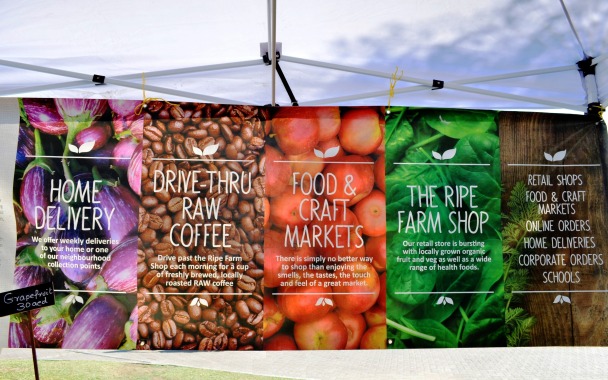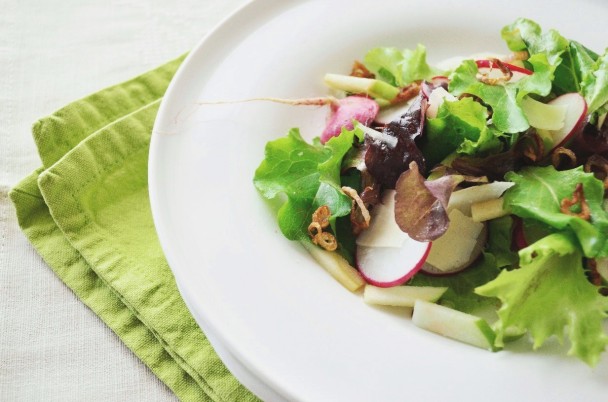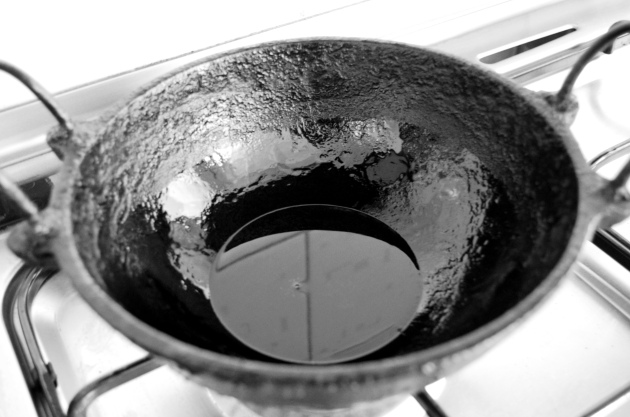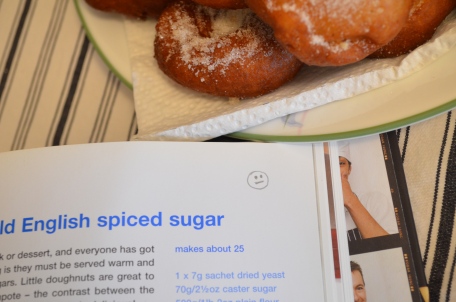
I love Christmas. I love everything about Christmas – the colours, the smells, the excitement, the presents, good old Mr. Clause and the radio blaring out cheerful holiday tunes… ‘It’s the most wonderful time of the year..’! I’m Buddhist and Christmas is not celebrated as much over here (you won’t find neon reindeer prancing around people’s front porches!) but you cannot escape that festive feeling in the air, come December.

To bring in some Christmas cheer and fill the house with the delicious smells of baking I decided to roll up my sleeves and attempt at making (trumpet call and drum-roll) the King of patisserie Eric Lanlard’s raspberry and chocolate tart. A very ambitious dessert for someone who’s made a tart only once in her life (pastry crumbled and the savoury filling was heavy) but who cares, it’s Christmas! Besides I’m not very fond of heady fruity puds and cakes which are traditional Christmas fare. Everyone loves chocolate and the raspberries add that perfect touch of Christmas red.
I also made an Asian inspired (Sri Lankan to be precise) starter – fish cutlets. Not the fanciest of starters to serve at a festive dinner party but they are delicious, and I gave these plain Janes an elegant makeover by making a little tower out of them, like a mini croquembouche – you see, it’s all in the presentation!

I spent an entire morning (during my weekend of course) shopping for the ingredients. Then I locked myself in the kitchen and did not emerge till Sunday morning when I went for work (in the Middle East the weekend falls on Friday and Saturday). I swore to myself I will not set foot in the kitchen for a long time to come. It was exhausting work and there was a lot of nail biting, hair pulling and stamping as well as moments of sheer elation. Oh the pains and joys of cooking!
First things first – the starter.
Fish cutlets are pretty simple to make and do not require fancy ingredients – tinned tuna, potato, some red onion and green chillies and a few pinches of spices. They are shaped like little spheres, you can shape them any way you want but the original Sri Lankan cutlet is shaped into a perfect little ball. These are then crumbed and deep fried till golden. Soft and moist on the inside and golden and crunchy on the outside, these cutlets are delicious served straight out of the frying pan.


And here’s my little tower of fish cutlets served on a very special plate. This is a replica of the china used for private dining services in the first-class suites of the RMS Titanic which I bought from a Titanic artefact exhibition in Calgary. The matching tea cup below is one of the artefacts from the shipwreck.


Moving on to the tart…
Making a tart is laborious work, especially when it’s Eric Lanlard’s tart! But I was up early morning ready to tackle the dreaded shortcrust pastry. A buttery and chocolaty aroma wafted from the pastry dough and just as I had anticipated the baking tart shell filled the house with delicious smells.
I took pictures of these gorgeous raspberries while the pastry case cooled down.


While rolling out the pastry I knew something wasn’t right. It started crumbling and sticking on to the rolling pin, but I was too impatient to get it in the oven, especially when I have been dreaming big beautiful tart dreams the night before. There are some things you just cannot rush…I realised this (maybe a little too late) when I plopped the tart crust out of the baking tin on to a plate and it broke into smithereens! My heart sank right to the bottom of my stomach. My tart dreams were shattered.
I was tempted to start all over but instead I crumbled the shards and mixed it with butter and made a sort of crumble which I used to line the bottom of the tart tin. Then I filled it with raspberries and poured the chocolate ganache over the top. Instead of being cosily enveloped in a flaky chocolaty tart case the silky ganache had to lie uncomfortably on a gravelly mixture of burnt crumbs!

I spent the next half hour looking for some guinea pigs to try my tart. My berry-hating son ran away in horror when he saw the raspberries hidden beneath the chocolate but my husband was not so lucky. He pronounced it ‘you-get-used-to-the-taste-after-a-few-forkfuls’. It did not taste too bad. The ganache is decadently rich and smooth and if you can get the pastry right this one’s a keeper. I have given the recipe below for all those baking goddesses who can turn out picture perfect tarts with two flicks of their magical rolling pins.
As for me, well, I think I’ll stick to cupcakes for a while. Happy holidays! xx
Fish Cutlets

2 tins of good quality tuna in oil
2 medium sized potatoes, peeled
1 medium red onion, finely chopped
2-3 fresh green chillies, finely chopped
2-3 curry leaves, finely shredded
1-2 tsp chilli powder
1 tsp turmeric
1 tbsp oil and extra for deep frying
1 egg, beaten
Breadcrumbs
Salt to taste
Boil the potatoes in salted water till soft and well cooked. Roughly dice the boiled potato and put in a large bowl. Add the spices and salt to the potato and gently mash together to incorporate the spices and keep aside. Drain most of the oil from the tuna (keep about a tablespoon, this will make the mixture moist) and empty into another bowl. Add the chopped green chillies to the tuna.
Heat the oil in a large frying pan. Once the oil is hot add the onion. When the onion turns soft and slightly brown add the shredded curry leaf. Sauté for a minute or so. Add the tuna and green chillies and fry for a further minute. Finally add the spiced potato and give it a good mix. Add more salt if required. Fry the mixture for 2-3 minutes and turn off the heat.
Once the mixture has cooled down, shape into bite sized balls using your palms. Cool the shaped balls for a while in the fridge before frying (they’ll keep their shape better). Dip each ball in beaten egg and roll in the breadcrumbs till well coated.
Heat the oil in a deep frying pan and once it is nice and hot drop in 2-3 cutlets at a time and fry till golden brown. Drain on kitchen paper and serve immediately with some chilli sauce for dipping.

Eric Lanlard’s Raspberry & Chocolate Tart
😐 = my rating for the tart
50g (2oz) cocoa powder
50g (2oz) golden icing sugar
150g (5oz) unsalted butter, cubed, plus extra for greasing
3 egg yolks
1 tsp vanilla extract
500g (1lb) raspberries
For the ganache
200g (7oz) dark chocolate, roughly chopped
200ml (7fl oz) single cream
2 tsp vanilla extract
75g (3oz) unsalted butter
Sift the flour, cocoa powder and icing sugar together into a large bowl. Add the butter and rub in using your fingertips until the mixture resembles fine breadcrumbs. Add the egg yolks and gently mix together, then add the vanilla and combine to form a smooth dough. Cover with clingfilm and leave to rest in the refrigerator for at least 30 minutes.
Preheat the oven to 190°C (fan 170°C)/375°F/gas mark 5.
Lightly grease a 24 cm (9½in) diameter tart tin. Roll out the pastry on a lightly floured surface and carefully use to line the tin. Cover with ovenproof clingfilm and prick a few holes to avoid pockets of air while it bakes. Fill the pastry case with baking beans and bake in the oven for 15 minutes. Remove the clingfilm and beans and return to the oven for a further 5 minutes. Leave to cool.
To make the ganache, melt the chocolate in a heatproof bowl set over a saucepan of barely simmering water, making sure the surface of the water does not touch the bowl. Meanwhile, put the cream into a saucepan and heat until steaming hot, but do not let it boil.
Remove the melted chocolate from the heat and slowly pour in the cream, gently stirring the mixture. Add the vanilla, then the butter and stir together.
Pack the cooled pastry case with raspberries, saving a few for decoration. Pour the hot chocolate ganache over the raspberries to fill to the top of the pastry.
Leave to set in the refrigerator for at least 30 minutes.
Serve decorated with the reserved raspberries dusted with a little icing sugar.

Fa la la la laaaa la la la laaaaa!

















































